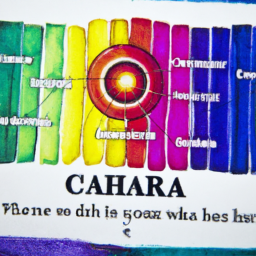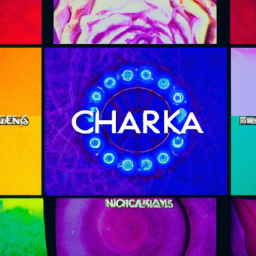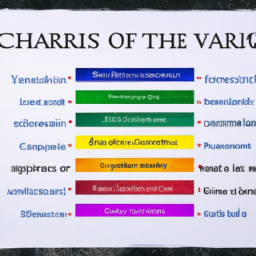Chakras, also known as energy centers, are the focal points or junctions in our body where energy flows. These energy centers are said to exist in the subtle body and are believed to be responsible for regulating different aspects of our physical, emotional, and spiritual well-being. There are seven main chakras, each connected to a specific organ, hormonal gland, and nerve plexus in the physical body. In this article, we will explore the names and significance of these chakras.
1. Root Chakra
The root chakra, also known as Muladhara in Sanskrit, is located at the base of the spine and is associated with the color red. This chakra is responsible for our sense of security, stability, and survival instincts. It governs our physical needs and is linked to the adrenal gland, which regulates the fight or flight response in our body.
2. Sacral Chakra
The sacral chakra, also known as Svadhishthana, is located in the lower abdomen, below the navel. Its color is orange, and it is associated with our creativity, sexuality, and emotional well-being. This chakra is connected to the reproductive organs and is responsible for our desire for pleasure and abundance in life.
3. Solar Plexus Chakra
The solar plexus chakra, also known as Manipura, is located in the upper abdomen, above the navel. Its color is yellow, and it is associated with our self-esteem, confidence, and personal power. This chakra is connected to the digestive system and is responsible for our sense of control and willpower.
4. Heart Chakra
The heart chakra, also known as Anahata, is located in the center of the chest, near the heart. Its color is green, and it is associated with our ability to love, forgive, and feel compassion. This chakra is connected to the heart and lungs, and it governs our relationships with ourselves and others.
5. Throat Chakra
The throat chakra, also known as Vishuddha, is located in the throat area and is associated with the color blue. This chakra is linked to our ability to communicate, express ourselves, and speak our truth. It is connected to the thyroid gland, which regulates our metabolism and energy levels.
6. Third Eye Chakra
The third eye chakra, also known as Ajna, is located in the center of the forehead, between the eyebrows. Its color is indigo, and it is associated with our intuition, perception, and wisdom. This chakra is connected to the pituitary gland, which regulates our hormones and influences our growth and development.
7. Crown Chakra
The crown chakra, also known as Sahasrara, is located at the top of the head and is associated with the color violet or white. This chakra is linked to our spiritual connection, consciousness, and higher understanding. It is connected to the pineal gland, which regulates our sleep-wake cycle and melatonin production.
The names of the chakras are derived from Sanskrit words, and each has its unique meaning. But their significance goes beyond just their names. These energy centers are interconnected and work together to maintain balance and harmony in our mind, body, and soul. When one or more of these chakras are blocked or imbalanced, it can lead to physical, emotional, or spiritual distress.
Understanding the names and functions of each chakra can help us identify areas of our life that need attention. By practicing techniques like yoga, meditation, breathing exercises, and energy healing, we can activate and align our chakras to promote well-being and enhance our overall quality of life.
In conclusion, the names of the chakras are not just words but hold deep symbolic meanings and powerful energy. By acknowledging and honoring these energy centers, we can tap into our inner wisdom and live a more conscious and balanced life.





Fascinating! #Chakras
Interesting question! Can’t wait to learn more! #ChakraKnowledge
Awesome post! Chakra energy is so fascinating! #ChakraLove